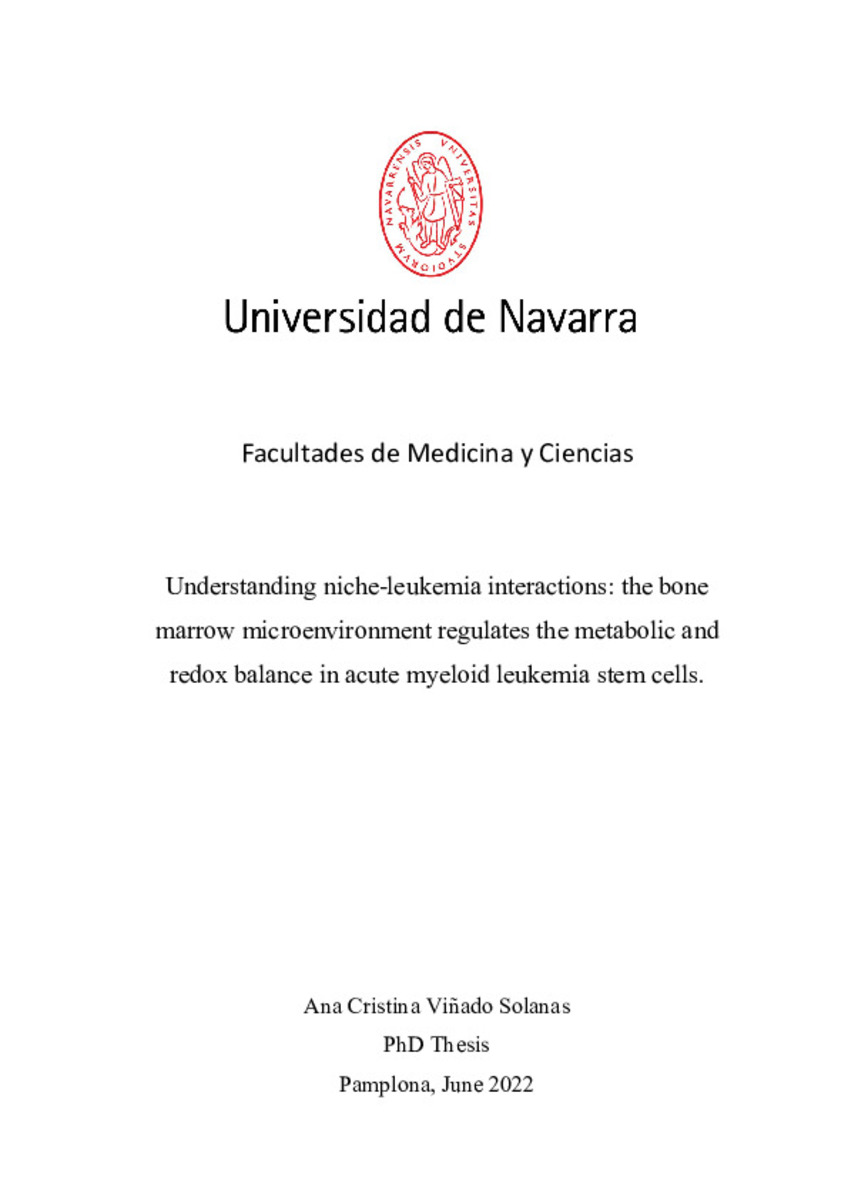Understanding niche-leukemia interactions: the bone marrow microenvironment regulates the metabolic and redox balance in acute myeloid leukemia stem cells
Palabras clave :
Materias Investigacion::Ciencias de la Salud::Oncología
Niche-leukemia interactions
Acute myeloid leukemia
Hematopoietic stem cells
HSC
Fecha de publicación :
31-ene-2023
Fecha de la defensa:
25-oct-2022
Editorial :
Universidad de Navarra
Cita:
VIÑADO, Ana Cristina. "Understanding niche-leukemia interactions: the bone marrow microenvironment regulates the metabolic and redox balance in acute myeloid leukemia stem cells". Rifon, J. y Saez, B. (dirs.). Tesis doctoral. Universidad de Navarra, Pamplona, 2022.
Aparece en las colecciones:
Estadísticas e impacto
0 citas en

0 citas en

Los ítems de Dadun están protegidos por copyright, con todos los derechos reservados, a menos que se indique lo contrario.







